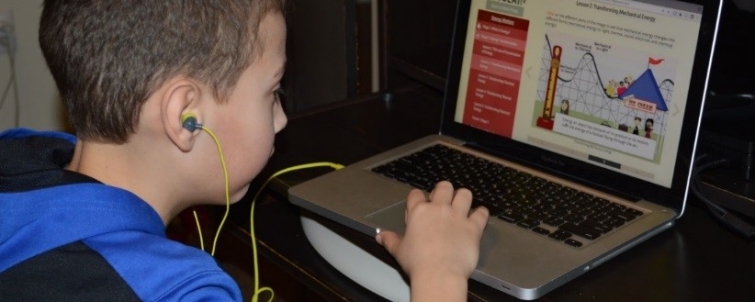Web-based teaching can improve science understanding for struggling pupils

© University of Oregon, 2018. All rights reserved. A new study shows that web-based learning tools in the classroom promote science literacy for underachieving students.
Web-based learning tools can help deepen science knowledge among all middle school students, and ease the science literacy gap for underachieving students, according to a three-year study published today in the International Journal of Science Education.
Researchers introduced four interactive online science units, which students and teachers accessed with computers or tablets, into 13 middle schools in two US states.
The online units were tested in a randomized controlled trial with over 2,300 students and 71 teachers. While all participating students improved their science knowledge, the results were particularly notable for less able students.
Students with learning disabilities improved 18 percentage points on assessments of science knowledge from pre-test to post-test, and English language learners increased 15 percentage points. Pupils taught the same content with traditional methods, such as textbooks, showed only 5-point gains.
The results are especially important given that students with learning disabilities and English language learners have been historically marginalized in science, technology, engineering, and mathematics (STEM) fields. Despite recent gains, a wide educational attainment gap remains for these students, making them less likely than Caucasian and Asian pupils to complete science coursework in school and pursue STEM careers.
“These significant findings demonstrate that the online curriculum was effective in improving science knowledge for students who struggle with science,” said Dr Fatima Terrazas Arellanes of the University of Oregon, Principal Investigator of the project.
“Well-designed instructional technology really works to lessen the science literacy gap among diverse groups of learners. Technology offers an engaging and motivating environment for learning, and we are just beginning to understand how we can use it effectively to support students with learning disabilities and English language learners.”
The online units were structured with lessons and activities like textbooks, but the content was much more interactive. Guided by their teachers, students learnt science through watching videos, playing educational games, conducting virtual experiments, and collaborating with their classmates.
The content was especially beneficial to students who struggle thanks to embedded eText supports, such as text-to-speech (hearing online text read aloud), pop-up vocabulary definitions, interactive diagrams, digital note-taking, and captioned videos.
Going forward, the challenge will be for researchers and policymakers to develop more evidence-based online tools that teachers can implement with students in their classrooms. The ultimate goal is to help all students, and especially those who struggle, to increase society’s science literacy and forge careers in STEM fields.
Dr Terrazas Arellanes added: “Our work adds to a growing body of evidence suggesting that instructional technology has a place in the classrooms of today and tomorrow — especially for science and especially for students with learning disabilities. We have shown that these tools are not only effective, but can be easily integrated.”